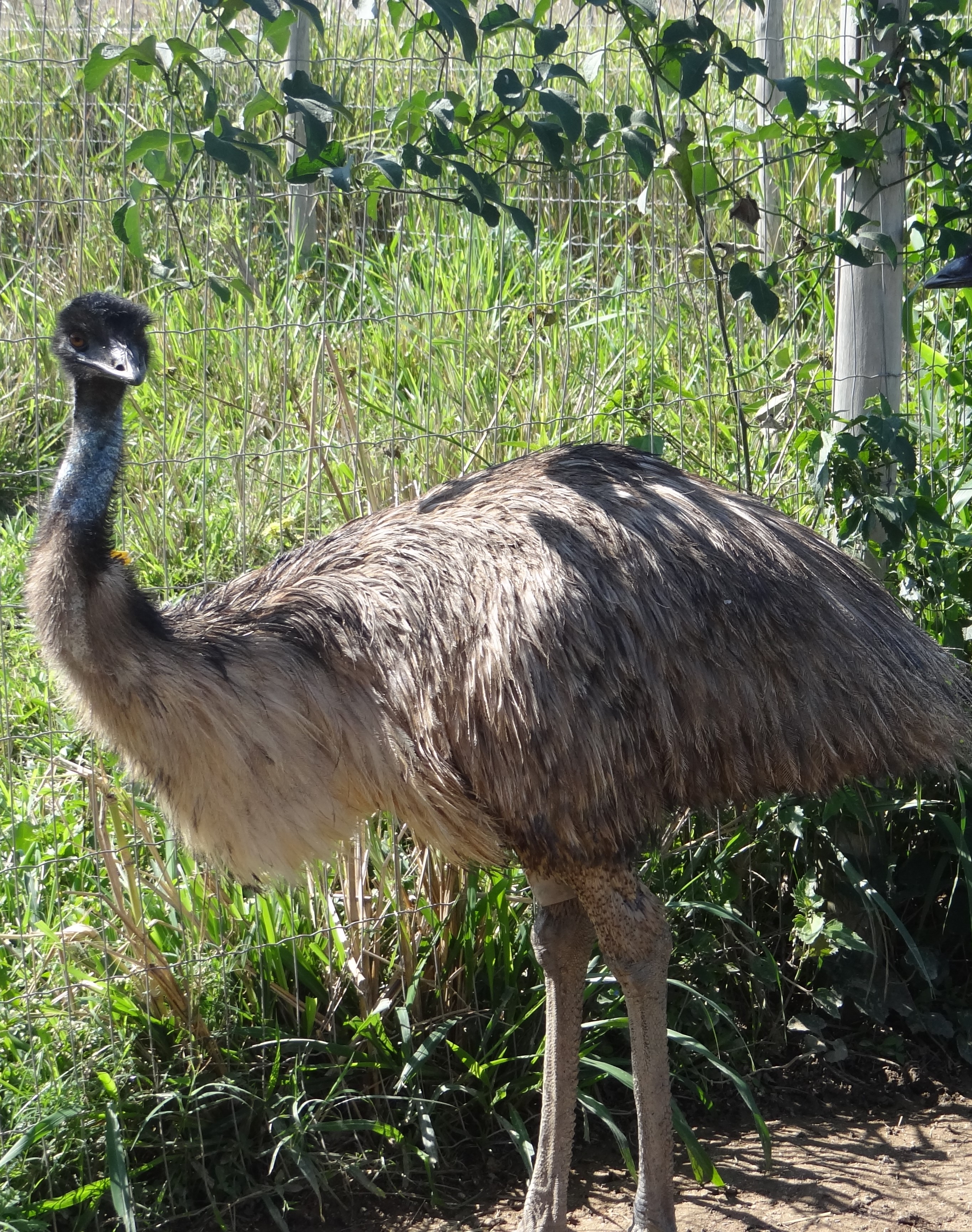Alfalfa hay in emu finisher diet: performance, carcass yield and gastrointestinal allometry
Heno de alfalfa en dieta final para emú: desempenho, rendimiento de carcasa y alometría gatrointestinal

This work is licensed under a Creative Commons Attribution-NonCommercial-ShareAlike 4.0 International License.
Show authors biography
Objective. The results of the inclusion of alfalfa hay on emu diet were determined, as a plain trial to analyze the field practice of using it as a roughage source similar to other ratites diets. Materials and methods. The treatments consisted of two diets, without (diet 1) or with (diet 2) alfalfa hay inclusion. Twenty emus, with 38.4 weeks of mean age, were distributed in two treatments and housed in a semi-intensive system with ad libitum feed and water. The body weight was assessed weekly over 13 weeks. After 91 days of trial, the emus were slaughtered and the carcass yield and gastrointestinal allometry were measured. Results. Cumulative weight gain was lower (p<0.05) by intake diet 2 than diet 1, 2.12 and 2.08 kg, at 11 and 12 weeks after the start of the trial, respectively. Further, abdominal and visceral fat deposition in the emus fed with diet 2 was 0.77 and 0.63% lower (p<0.05), respectively. The inclusion of alfalfa hay increased gizzard and intestine relative weight (p<0.05) and intestine relative length (p<0.05), however, cecum allometry wasn’t affected (p>0.05). Conclusions. Alfalfa hay can negatively compromise the growth and fat deposition of emus when it is added to the finisher feed, and alter the allometry of the gastrointestinal tract.
Article visits 233 | PDF visits
Downloads
- Jeengar MK, Kumar PS, Thummuri D, Shrivastava S, Guntuku L, Sistla R, et al. Review on emu products for use as complementary and alternative medicine. Nutrition. 2015; 31(1):21–27. https://doi.org/10.1016/j.nut.2014.04.004
- Menon DG, Bennett DC, Uttaro B, Schaefer AL, Cheng KM. Carcass yields and meat quality characteristics of adult emus (Dromaius novaehollandiae) transported for 6h before slaughter. Meat Sci. 2014; 98(2):240–246. https://doi.org/10.1016/j.meatsci.2014.05.027
- Naveena BM, Sen AR, Muthukumar M, Girish PS, Praveen Kumar Y, Kiran M. Carcass characteristics, composition, physico-chemical, microbial and sensory quality of emu meat. Br Poult Sci. 2013; 54(3):329–336. https://doi.org/10.1080/00071668.2013.790006
- Frei S, Ortmann S, Reutlinger C, Kreuzer M, Hatt JM, Clauss M. Comparative digesta retention patterns in ratites. Auk. 2015; 132(1):119–131. https://doi.org/10.1642/AUK-14-144.1
- El-Wahab AA, Schuchmann FF, Chuppava B, Visscher C, Pfarrer C, Kamphues J. Studies on the weight of the gastrointestinal tract, digesta composition and occurrence of gastro- and enteroliths in adult domesticated ostriches fed different diets. Poult Sci. 2021; 100(9):101359. https://doi.org/10.1016/j.psj.2021.101359
- Horbańczuk OK, Wierzbicka A. Technological and nutritional properties of ostrich, emu, and rhea meat quality. J Vet Res. 2016; 60(3):279–286. https://doi.org/10.1515/jvetres-2016-0043
- Sell J. Nutrition Guidelines for Ostriches and Emus. Iowa SUS: Livestock; 1997. https://store.extension.iastate.edu/product/5239
- Matlhoko P, Webb EC, Chamunorwa P. Dietary manipulation of oil production in commercial emu. S Afr J Anim Sci. 2010; 40:442–445. https://hdl.handle.net/10520/EJC94776
- Frei S, Hatt J-M, Ortmann S, Kreuzer M, Clauss M. Comparative methane emission by ratites: Differences in food intake and digesta retention level out methane production. Comp Biochem Physiol Part A Mol Integr Physiol. 2015; 188:70–75. https://doi.org/10.1016/j.cbpa.2015.06.022
- Sakomura NK, Rostagno HS. Métodos de Pesquisa em Nutrição de Monogástricos. 2 Edição. Jaboticabal, SP: Funep; 2016.
- Choct M. Feed non-starch polysaccharides for monogastric animals: classification and function. Anim Prod Sci. 2015; 55(12):1360. https://doi.org/10.1071/AN15276
- Bederska-Łojewska D, Świątkiewicz S, Arczewska-Włosek A, Schwarz T. Rye non-starch polysaccharides: their impact on poultry intestinal physiology, nutrients digestibility and performance indices – a review. Ann Anim Sci. 2017; 17(2):351–369. https://doi.org/10.1515/aoas-2016-0090
- Pekel AY, Horn NL, Adeola O. The efficacy of dietary xylanase and phytase in broiler chickens fed expeller-extracted camelina meal. Poult Sci. 2017; 96(1):98–107. https://doi.org/10.3382/ps/pew183
- Jiménez-Moreno E, de Coca-Sinova A, González-Alvarado JM, Mateos GG. Inclusion of insoluble fiber sources in mash or pellet diets for young broilers. 1. Effects on growth performance and water intake. Poult Sci. 2016; 95(1):41–52. https://doi.org/10.3382/ps/pev309
- Zhao PY, Kim IH. Effect of diets with different energy and lysophospholipids levels on performance, nutrient metabolism, and body composition in broilers. Poult Sci. 2017; 96(5):1341–1347. https://doi.org/10.3382/ps/pew469
- Tejeda OJ, Kim WK. Effects of fiber type, particle size, and inclusion level on the growth performance, digestive organ growth, intestinal morphology, intestinal viscosity, and gene expression of broilers. Poult Sci. 2021; 100(10):101397. https://doi.org/10.1016/j.psj.2021.101397
- Sousa DC, Oliveira NLA, Santos ET, Guzzi A, Dourado LRB, Ferreira GJBC. Caracterização morfológica do trato gastrointestinal de frangos de corte da linhagem Cobb 500®. Pesqui Veterinária Bras. 2015; 35(Suppl 1):61–68. https://doi.org/10.1590/S0100-736X2015001300011
























